They say Manila is busy, loud, and crowded-and yes, they’re right, and that’s why you get numerous things to do here!
But here’s the thing: under the loud jeepneys, bright neon streets, and countless malls, there is a city full of stories. Manila isn’t the kind of place you “see” in one glance; it’s the kind of city you feel with your senses.
It’s a place where old Spanish walls stand next to modern skyscrapers. You can enjoy dumplings in the world’s oldest Chinatown and then have fresh seafood cooked right in front of you. Sunsets over Manila Bay will take your breath away and remind you why it’s called the “Pearl of the Orient.”
In short, the best things to do in Manila include exploring Intramuros (the historic walled city), visiting Rizal Park, eating your way through Binondo (the world’s oldest Chinatown), shopping at the Mall of Asia, watching the sunset along Roxas Boulevard, and diving into the Philippines’ nightlife at Poblacion, Makati. You can also enjoy art at the Ayala Museum, fresh seafood at Dampa Seaside, and family fun at Manila Ocean Park.
So, if you’re ready to look past the surface and fall for Manila’s magical charm, here’s my list of the 20 best things to do in Manila– from timeless landmarks to late-night adventures.
Visit the Iconic Intramuros-The Walled City
Intramuros is a Latin word that means “within the walls.” It is the best place to visit in the Philippines to know the history, culture and art.
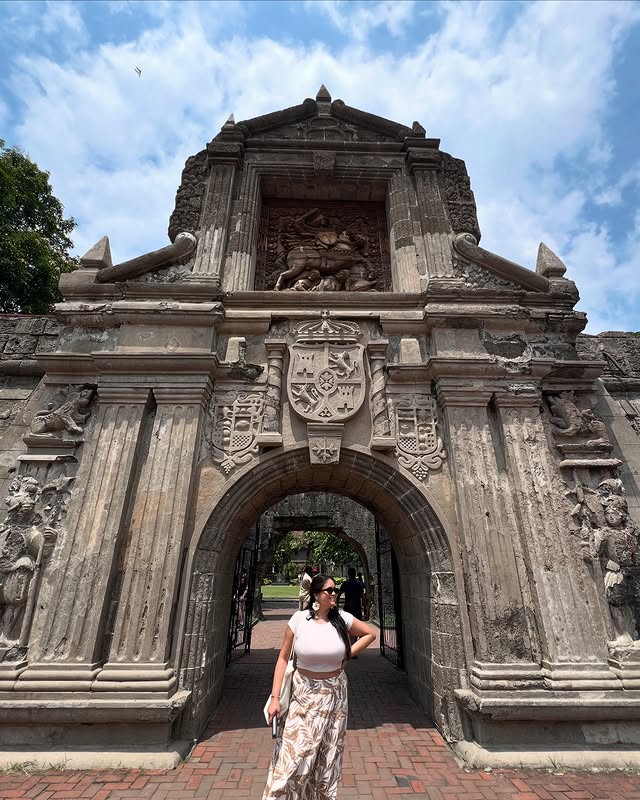
Do you know why Intramuros is called “The Walled City”?Because massive stone walls surround it– some up to 20 feet high, bastions and forts like Fort Santiago, strategically placed to defend the city, and moats and gates, which controlled entry and exit, making Intramuros a fortified settlement.
It was built by the Spanish during their colonial rule in the Philippines to protect the city from foreign invasions, pirates, and local uprisings.
Thus, Intramuros is the historic district of Manila, reflecting the old soul of the city. The best time to visit Intramuros is in the late afternoon when the light is golden and the streets are quieter.
If you visit inside this walled city, you will see cobblestone streets, horse-drawn carriages, and centuries-old stone walls that tell stories of Spanish rule.
Highlights
- Fort Santiago: A historic citadel with leafy gardens and a moving Rizal Shrine Museum
- San Agustin Church & Museum: The oldest stone church in the Philippines
- Casa Manila: A charming museum that recreates 19th-century colonial life
- Bambike Eco Tour: Explore the district on quirky handmade bamboo bicycles
Tip: If possible, join a guided tour; the stories bring the walls to life in ways that Google never could.
Have a Picnic at Rizal Park (Luneta)
Rirzal park is also known as Luneta Park. It is named Luneta because ‘luna’ means ‘moon’ and the park is shaped like a moon.
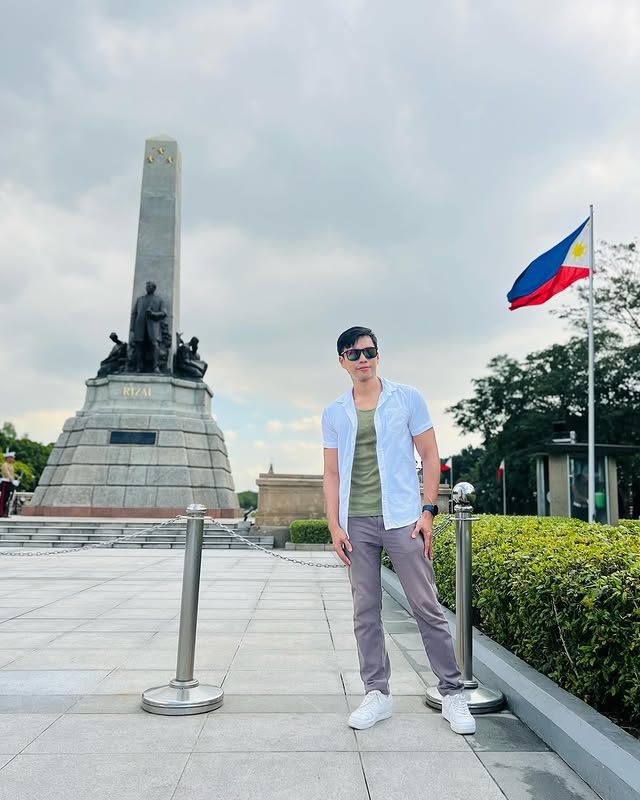
It’s a symbol of national pride. Here stands the iconic Rizal Monument, honouring Dr. José Rizal, the country’s national hero, whose writings inspired a revolution.
Families come here for picnics, couples walk under the trees, and on weekends, you can often see open-air concerts and cultural shows.
Highlights
- Rizal Monument: The symbolic centrepiece, guarded 24/7
- Dancing Fountains: A colourful light-and-water show in the evenings
- Ornamental Gardens: Japanese and Chinese gardens are perfect for a peaceful walk
- Open Spaces: Great for jogging, picnicking, or simply people-watching
Tip: Drop by around sunset. The monument looks extra striking against the fiery Manila Bay sky, and you might catch the fountain show after dark.
Embrace the Beauty of San Agustin Church
Do you know what San Agustin Church is famous for? Baroque artistry, including architecture and artefacts, featured painted ceilings that created 3D effects, as well as old chandeliers.
It is titled as the oldest stone church in the Philippines and recognised as a UNESCO World Heritage Site.
San Agustin Church is a masterpiece located inside the walls of Intramuros, which has withstood wars, earthquakes, and the test of time.
This church became the headquarters of Spanish missionaries, hosted grand colonial weddings, and even served as a refuge during battles.
Highlights
- Main Hall & Ceiling Frescoes: Baroque artistry, with trompe-l’œil paintings that create an illusion of depth.
- Museum of San Agustin: Showcases religious artefacts, centuries-old manuscripts, and colonial-era treasures.
- Historical Significance: Venue for the 1898 surrender of Manila to the Americans, marking the end of Spanish rule.
- Quiet Courtyard: A peaceful monastery.
Tip: Consider visiting with a guide if possible- hearing the stories of what the church has endured makes the visit ten times more meaningful.
Witness the Oldest Chinatown at Binondo
Binondo is the oldest Chinatown in the world. Established in 1594, it was built as a colony for Chinese immigrants during the Spanish era.
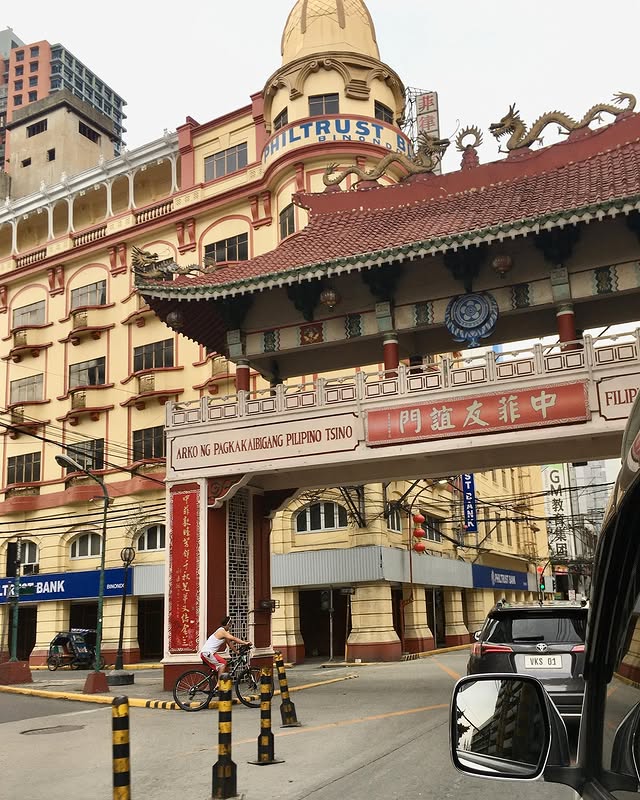
It became the centre of trade, merging Filipino, Chinese, and Spanish influences.
Why Visit
Today, Binondo is a place for food lovers and culture seekers. Its narrow streets have old shops, traditional bakeries, and small eateries that serve recipes passed down through generations.
In addition to food, Binondo has temples, old churches, and shows Manila’s long history of trade and cultural exchange.
Highlights
- Binondo Church (Minor Basilica of St. Lorenzo Ruiz): A historic church with a Chinese-inspired facade.
- Ongpin Street: The centre of Chinatown life, famous for gold shops and eateries.
- Food Crawl: From dumplings and noodles to hopia (bean-filled pastry) and tikoy (sticky rice cake), try everything.
- Chinese Temples: Quiet, incense-filled spaces tucked between busy streets.
Tip: Come hungry! The best way to experience Binondo is through a food crawl. Join a guided tour or follow your nose- the dim sum and lumpia (spring rolls) here are legendary.
Visit the Historic Fort Santiago
Fort Santiago is best known as the place where Dr. José Rizal, the national hero of the Philippines, spent his last days before his execution in 1896.
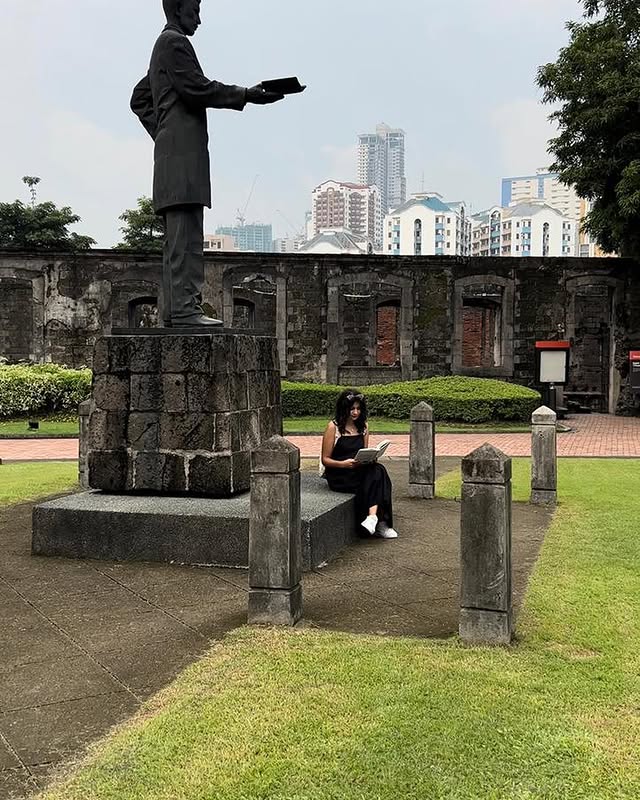
It was built in 1571 by Spanish conquistador Miguel López de Legazpi, and its walls tell stories of battles and bravery, including the story of one man who became a national hero.
Beyond its tragic past, Fort Santiago is worth visiting for its lush gardens, shaded plazas, and river views.
Highlights
- Rizal Shrine Museum: Discover Rizal’s writings, memorabilia, and the story of his final hours.
- Rizal’s Final Footsteps: A solemn path of bronze prints leading to history’s turning point.
- The Dungeons: Once used by Spanish and later Japanese forces as prisons during World War II.
- Plaza Moriones: Wide lawns perfect for slowing down after exploring.
Tip: Late afternoon visits are perfect, the light is golden, the weather is cooler, and the atmosphere haunting yet beautiful.
Explore the Wonders of the Ocean at Manila Ocean Park
Who says you need to leave the city for a dose of the ocean? The speciality of the Manila Ocean Park brings the deep blue right into the heart of the capital.

Opened in 2008, it’s the Philippines’ first world-class oceanarium and has since grown into a family-favourite spot that’s part theme park, part aquarium, and all-around fun.
The major 8 attractions of Manila Ocean Park include
- Entry to the Oceanarium
- Trails to Antarctica: Penguin Exhibit
- Trails to Antarctica: Christmas Village
- World of Creepy Crawlies
- All Star Bird Show
- Sea Lion Show
- Stingray Dry Encounter
- Creepy Crawlies Show and Tell
Whether you’re travelling with kids, friends, or just the young-at-heart, you’ll find everything from colourful reef fish and graceful stingrays to penguins and sea lions that know how to put on a show and entertain everyone.
Tip: Go on a weekday morning to avoid crowds. And if you’re staying until evening, check out the Musical Fountain Show.
Explore the Charming Manila Cathedral
Manila Cathedral is a symbol of faith that has risen from the ashes time and again.
First built in 1581, the cathedral has been destroyed and rebuilt multiple times due to earthquakes, fires, and even the bombings of World War II. What you see today is its eighth and grandest reincarnation, completed in 1958.
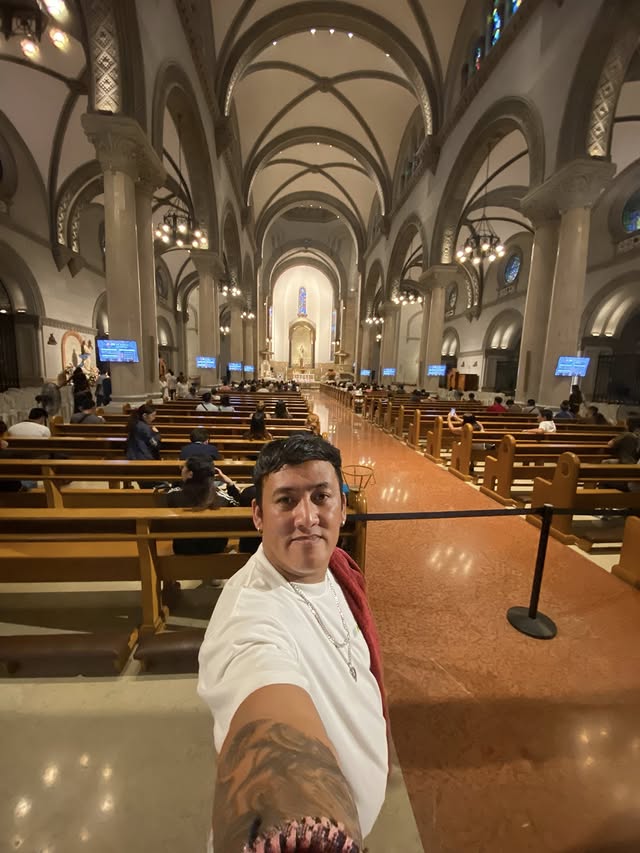
The other name of Manila Cathedral is The Minor Basilica and Metropolitan Cathedral of the Immaculate Conception.
Highlights
- Neo-Romanesque Architecture
- Stained Glass Windows: Depicting Biblical stories with colourful artistry.
- Papal Chair: Used by Pope John Paul II and Pope Francis during their visits.
- Peaceful Plaza Roma: Right outside the cathedral, perfect for photos and people-watching.
The Manila Cathedral is a symbol of the Filipino spirit of resilience. It is the main church of the Philippines and has hosted papal visits, important ceremonies, and many quiet moments of prayer.
Whether you practice a religion or not, you will admire the beauty of tall arches, stained-glass windows, and historical significance.
Discovering Philippine History at Ayala Museum
Ayala Museum is about the country’s art, history, and technology, making it engaging even for those who usually skip museums.
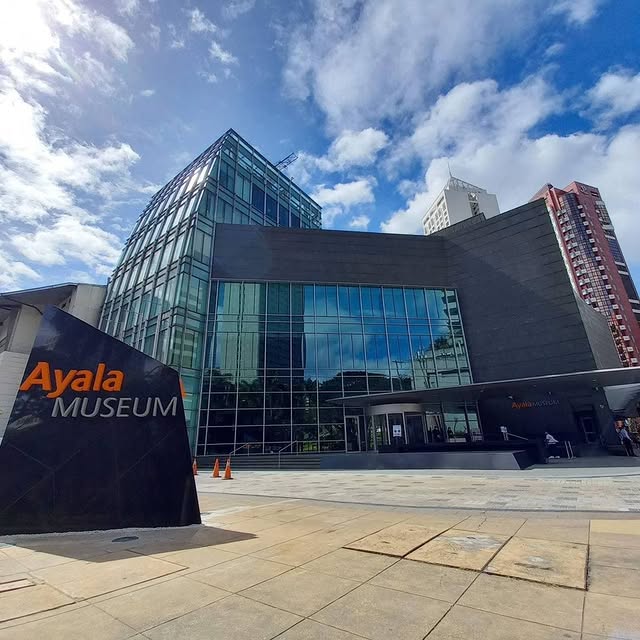
From pre-colonial gold treasures to contemporary art exhibits, it offers a crash course in what makes the Philippines so unique.
Highlights
- Gold of Ancestors Exhibit: Over 1,000 stunning pre-Hispanic gold artefacts showing the wealth of early Filipino culture.
- Diorama Experience: 60 handcrafted dioramas narrating Philippine history from pre-colonial times to the People Power Revolution.
- Contemporary Art Exhibits: Rotating shows featuring modern Filipino and international artists.
- Digital Gallery: Interactive displays that make history feel alive.
Ayala Museum is worth visiting if you want to understand the Philippines beyond jeepneys and fiestas.
Experience Peace at Greenbelt Chapel
Do you know the name of Greenbelt Chapel in Manila? It’s Sto. Niño de Paz Chapel. The architect of this chapel is Willie Fernandez, and Jess Dizon then enhanced it.
With its circular design, open-air layout, and lush garden surroundings, it’s a space where shoppers, workers, and travellers pause for a breather.
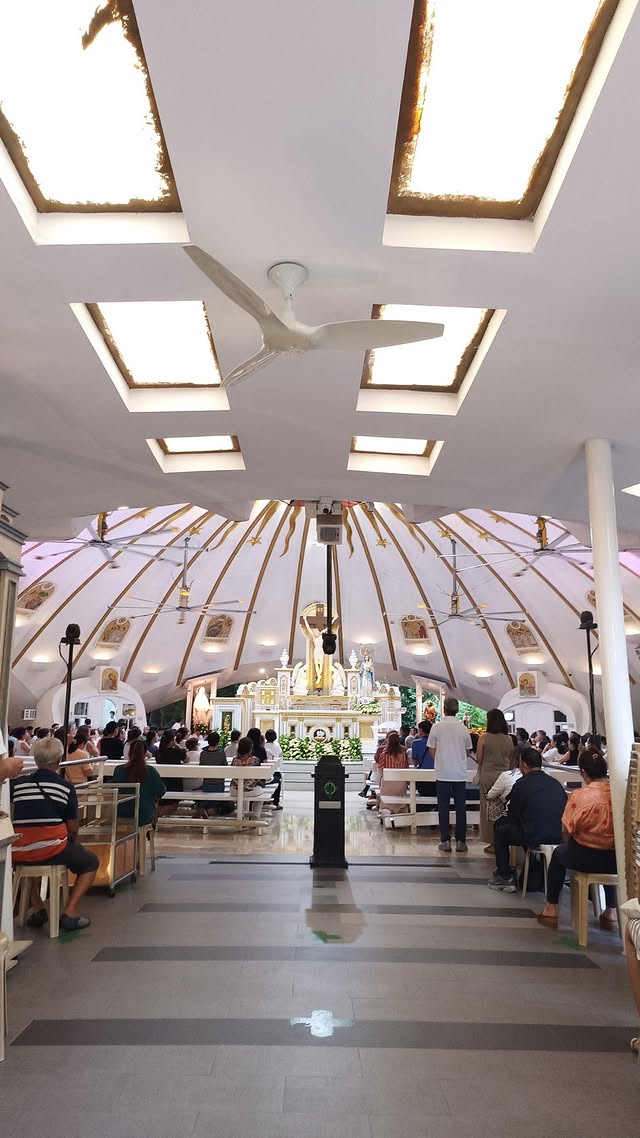
Highlights
- Unique Architecture: A dome-shaped structure with an open design, blending nature and spirituality.
- Green Gardens: Surrounded by koi ponds, trees, and landscaped walkways.
- Daily Masses: Popular among locals, especially during lunch breaks and evenings.
- Quiet Retreat: A rare chance to reflect in the middle of a commercial hub.
Tip: Visit during sunset- the soft golden light filtering through the trees makes the chapel glow beautifully.
Witness the Spanish Colonial House at Casa Manila
Casa Manila is the beautifully restored Spanish colonial house inside Intramuros. It was built to showcase how wealthy Filipino families lived during the Spanish era.
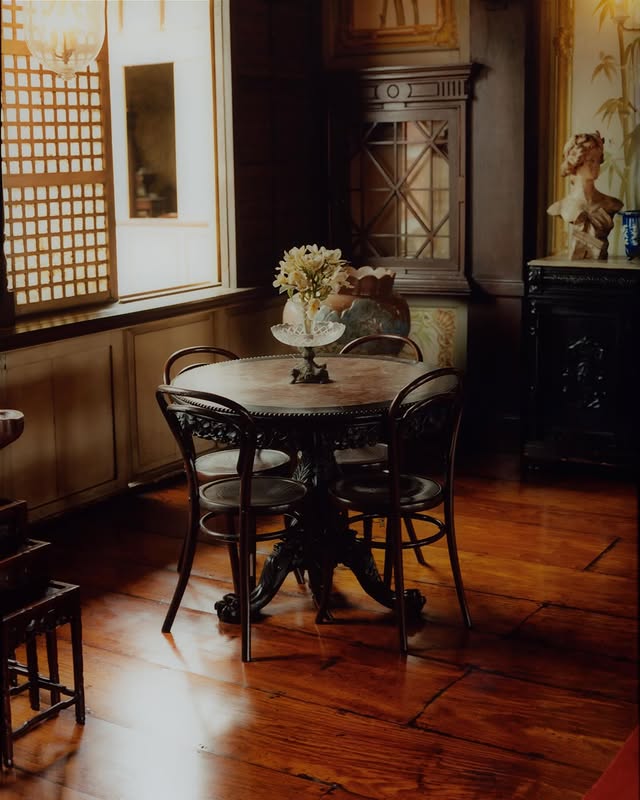
From the elegant wooden furniture to the cobblestone courtyard, everything here reflects Manila’s old-world charm.
It offers visitors a peek into the lavish lifestyles of the ilustrados (the educated elite) during the colonial period, giving you a deeper understanding of Manila’s cultural heritage.
Highlights
- Authentic Interiors
- Central Courtyard
- Art & Antiques
- Balcony Views
Note: Photography is allowed, but remember some areas are roped off to preserve the antiques.
Visit the Robinsons Place Manila
If you’re looking for a one-stop spot to shop, eat, and relax, visit Robinsons Place Manila. Located in Ermita and just a short walk from Luneta and Intramuros, this massive mall is a favourite among locals, students, and even tourists who need a break from sightseeing.

Buy souvenirs, enjoy a movie, or simply escape Manila’s midday heat; Robinsons Place is a reliable go-to place to buy the best things.
This mall has a relaxed and lived-in feel, unlike the fancy malls in Makati. Here, you can see how people from Manila spend their weekends.
Tip: If you’re staying near Malate or Ermita, this mall is super handy for meals, groceries, or last-minute shopping. Try some local food at the food court if you want a quick, budget-friendly bite.
Watch Sunset Over Manila Bay
If there’s one thing Manila is famous for worldwide, it’s the sunset over Manila Bay.
Locals and travellers alike gather along the baywalk to watch the sky burst into shades of orange, pink, and purple as the sun dips into the horizon. And it is best experienced if you visit during the best time of the year.
It’s free, it’s magical, and it’s something you shouldn’t miss when in the capital.
Street performers play music, families enjoy evening walks, and couples sit along the seawall sharing snacks. It’s Manila at its most romantic and relaxed.
Highlights: Breathtaking Sunsets, Roxas Boulevard Baywalk, Street Eats & Vendors, Cultural Shows & Fireworks during weekends or festivals.
Tip: Arrive about 30 minutes before sunset to grab a good spot along the seawall. If you want a more elevated view, many hotels and restaurants nearby have rooftop bars overlooking the bay.
Explore the National Museum Complex
Spread across several buildings, the National Museum Complex is the right place to learn about the Philippines’ history, art, and culture.
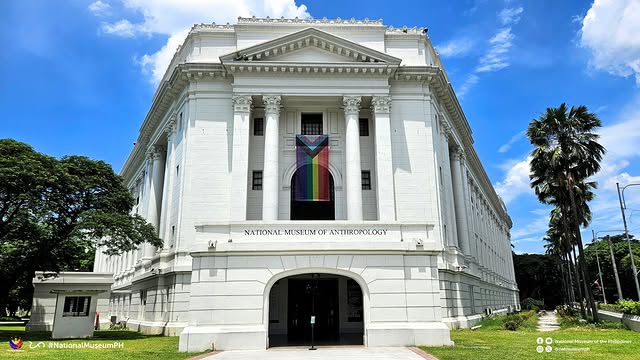
It houses treasures that trace the country’s journey from ancient times to the modern day. And the best part? Entry is free!
Highlights
- National Museum of Fine Arts: Home to Juan Luna’s masterpiece Spoliarium, a must-see painting that captures Philippine history and struggle.
- National Museum of Anthropology: Showcasing indigenous cultures, traditional textiles, and ancient tools.
- National Museum of Natural History: A stunning building with a “Tree of Life” atrium, featuring biodiversity exhibits.
- National Planetarium: For stargazers and kids who love space.
Tip: Wear comfortable shoes- the museums are spacious, and you’ll be walking a lot. If you’re short on time, prioritise the Fine Arts and Natural History buildings.
Enjoy the Nightlife at Poblacion, Makati
The energy of Manila transforms dramatically after sunset.
What was once a quiet residential area has become an energetic hub filled with rooftop bars, speakeasies, and unique restaurants that draw in locals, expats, and travellers alike.
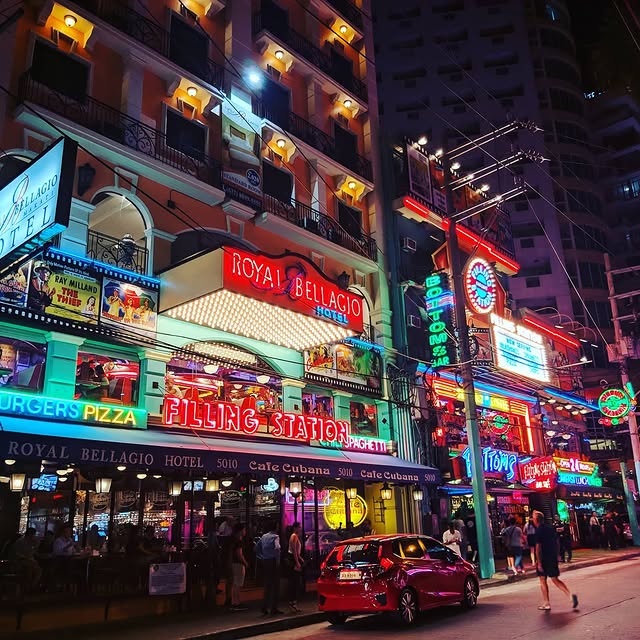
Poblacion has everything, including relaxed pubs, cocktail lounges, and places with live music.
It showcases Manila’s creative side with themed bars, secret entrances, and menus that combine global flavours with Filipino touches.
Highlights
- Rooftop Bars
- Food Crawl
- Live Music & DJ Sets
- Street Vibe
Experience Thrill at Star City
For a dose of thrills and childhood nostalgia, head to Star City, Manila’s iconic amusement park.
Recently rebuilt after a 2019 fire, the park is back and better than ever, bringing joy to families, groups of friends, and anyone craving a fun escape from the city’s bustle.
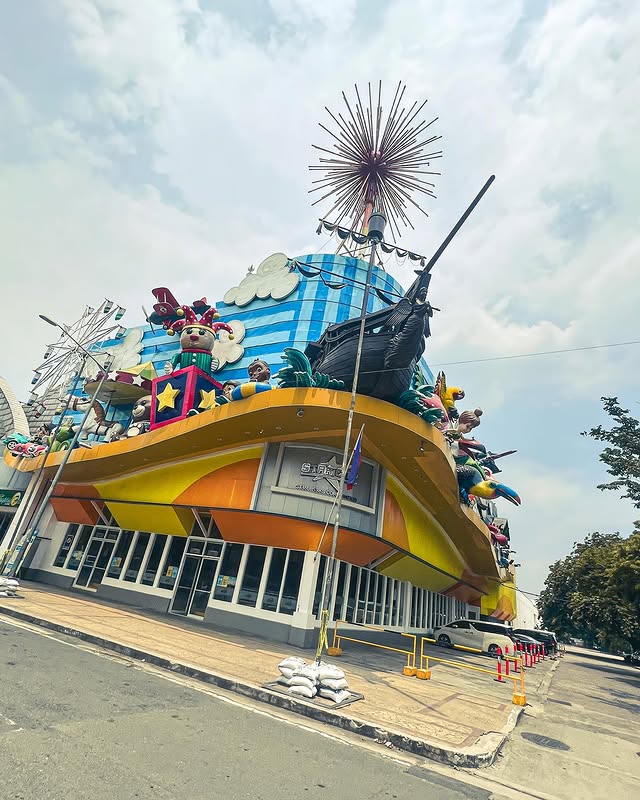
Screaming your lungs out on a rollercoaster, taking photos with life-sized characters, or watching a live performance, the park delivers that magical “theme park energy” Filipinos grew up with.
Highlights
- Roller Coasters & Rides
- Snow World
- Haunted House
- Live Entertainment (shows, parades, and seasonal events)
Tip: Visit on weekdays or non-peak hours to avoid long queues. If you’re travelling with kids, plan for at least half a day- there’s plenty to keep everyone entertained.
Do a Little Shopping at Divisoria Market
If you love the thrill of hunting for bargains, Divisoria Market is your place.
Known as Manila’s “shopping mecca,” it’s the go-to place for everything- clothes, fabrics, toys, home goods, party supplies, and more, often at prices way lower than malls.
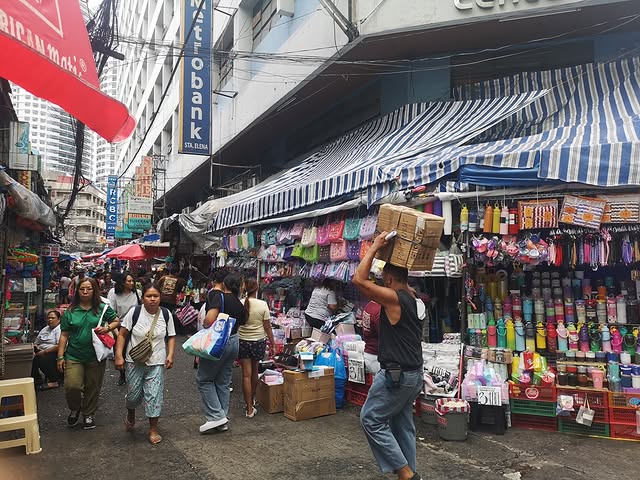
The busy atmosphere, the street food stalls, and the wide range of items create a cultural experience. Many locals shop here for wholesale deals, so you can see everyday life in Manila.
Best for: Bargain Shopping, Tutuban Centre & 168 Mall, Street Food Finds, Wholesale Deals
Tip: Go early in the morning to avoid the heaviest crowds.
Explore the Philippines’ Biggest Shopping Mall- SM Mall of Asia
SM Mall of Asia is the biggest shopping mall in the Philippines. With over 600 shops, hundreds of dining options, and unique attractions, this mall is more of an experience than just a mall.
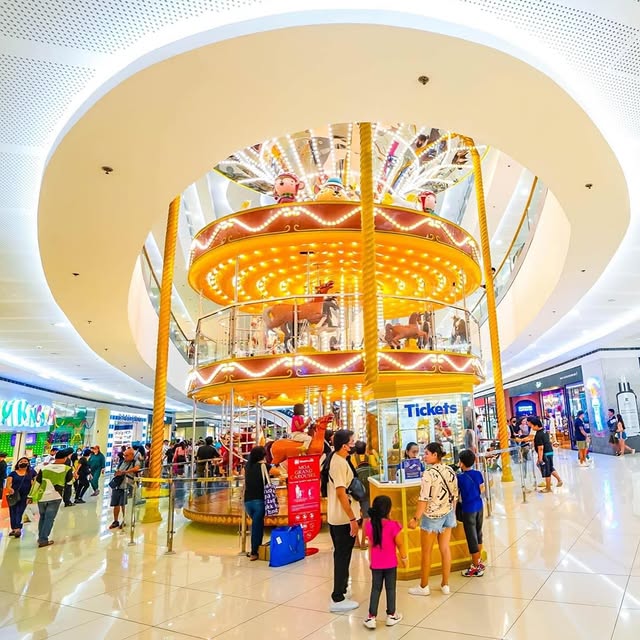
Highlights
- Shopping Galore: From luxury brands to budget-friendly finds.
- Dining Options: Filipino, Asian, and international cuisines under one roof.
- MOA Eye: A giant Ferris wheel offering stunning views of Manila Bay.
- IMAX Theatre: One of the biggest in the country, perfect for movie buffs.
- Seaside Boulevard: A relaxing waterfront strip, great for sunset walks.
Tip: Stay until evening to enjoy the famous Manila Bay sunset right outside the mall.
Experience Thrill at Paco Park & Cemetery
Paco Park is both haunting and heartwarming. It’s famous for being the original resting place of Dr. José Rizal after his execution, as well as other notable figures during the Spanish era.
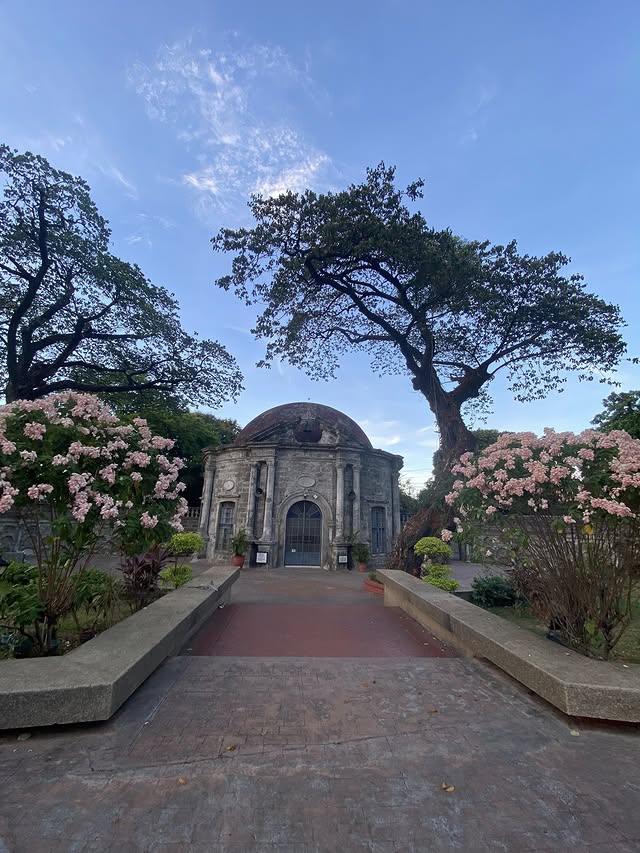
Looking back at history, this park was once a circular garden that served as a Spanish cemetery in the 1800s.
Today, it’s a serene public park filled with trees, stone walls, and romantic pathways- a place where history whispers through every corner.
Highlights
- Circular Cemetery Walls: Old Spanish stone walls that give the park its unique design.
- Rizal’s Resting Place: Where the national hero was first buried before being moved to Rizal Park.
- Chapel of St. Pancratius: A small but beautiful chapel often used for weddings.
- Romantic Ambience: With its lantern-lit pathways, it’s a favourite for couples.
See Manila’s Future at Bonifacio Global City
If Intramuros shows you Manila’s past, Bonifacio Global City (BGC) shows you its future.
Sleek skyscrapers, art-filled streets, trendy cafes, and high-end shops make this district feel like a city within a city. It’s clean, walkable, and filled with youthful energy.
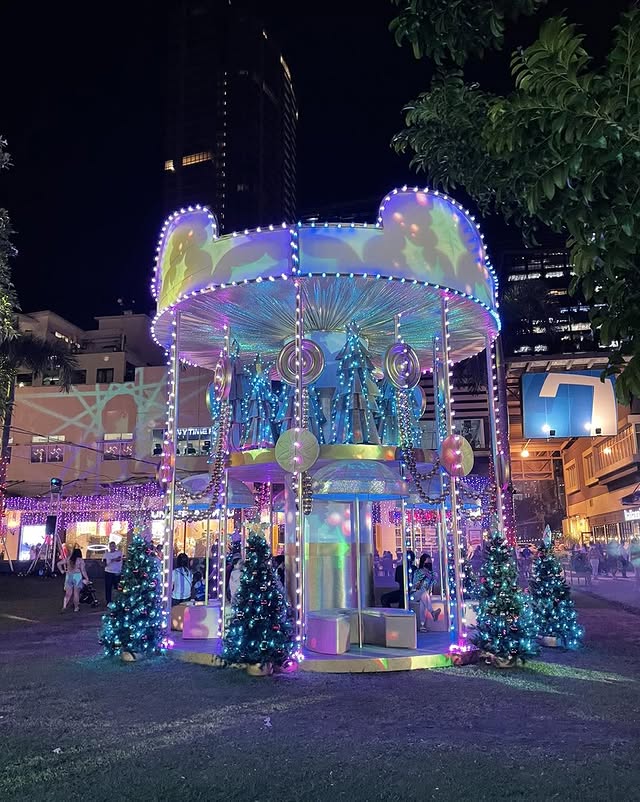
BGC offers a different side of Manila- stylish, cosmopolitan, and artsy. It’s where you can go from sipping speciality coffee to shopping in luxury boutiques, then end the night with rooftop cocktails or live music.
Highlights
- Bonifacio High Street: A long stretch of open-air shopping, dining, and entertainment.
- Street Art & Murals: Colourful, Instagram-worthy walls scattered across the district.
- Mind Museum: A science museum that’s both fun and educational, great for families.
- Dining & Nightlife: From global cuisines to speakeasy-style bars.
Tip: BGC is best explored on foot; wear comfy shoes.
Enjoy Serenity at Arroceros Forest Park
Arroceros Forest Park is a green space known as the city’s “last lung.” It is home to more than 60 types of trees and 8,000 plants. You can also see birds here that are hard to find anywhere else in the city.
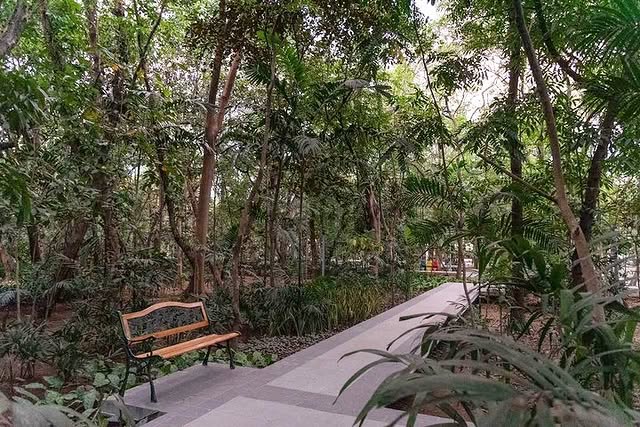
For locals, it’s a quiet escape from traffic and skyscrapers.
Highlights
- Walking Trails: Shaded paths perfect for a peaceful stroll.
- Biodiversity: Native trees, ornamental plants, and birdlife.
- Relaxing Vibes: A cool retreat away from the city’s heat and noise.
- Photography Spots: Green backdrops that contrast with Manila’s modern skyline.
Since it’s not as crowded as other parks, it’s a great spot for meditation, reading, or simply slowing down before returning to the busy streets of Manila.
Conclusion
Manila is a city of contrasts – you see centuries-old churches standing beside glittering malls, where lively street markets meet peaceful green parks, and where every sunset at Manila Bay feels like a gift.
Manila offers a variety of experiences, whether you’re interested in history, food, shopping, or enjoying the unique Filipino culture. Also, visit Cebu to try out the greatest things to do. You’ll remember your time here long after you leave.
So, are you ready to explore Manila’s mix of old and new? Pack your curiosity, bring your appetite, and let the Walled City and beyond show you why Manila is a great destination in itself. And in case you need any help planning your Philippines itinerary, we are here to help!
Frequently Asked Questions About the Best Things to Do in Manila
What is Manila famous for?
Manila is famous for its mix of Spanish colonial landmarks like Intramuros, vibrant street food, bustling markets such as Divisoria, and stunning sunsets at Manila Bay.
What are the best free things to do in Manila?
You can visit Rizal Park, stroll through Intramuros, explore the National Museum Complex, relax at Arroceros Forest Park, or watch the sunset at Manila Bay- all for free.
What is the number one tourist attraction in Manila?
The top tourist attraction in Manila is Intramuros, the historic Walled City, where you’ll find Fort Santiago, San Agustin Church, and Casa Manila.
Is Manila good for tourists?
Yes! Manila offers a rich mix of history, culture, food, shopping, and nightlife. While it can be busy, it’s an excellent starting point to experience the Philippines’ heritage and modern energy.
How many days should I spend in Manila?
Spending 2-3 days in Manila is ideal. This gives you enough time to explore historic Intramuros, museums, markets, malls, and enjoy a Manila Bay sunset without rushing.